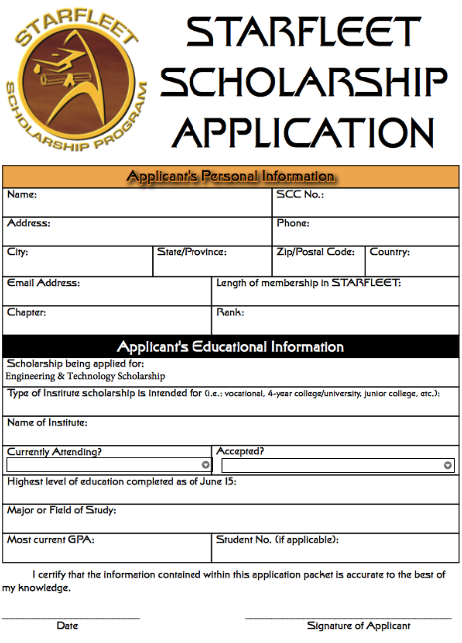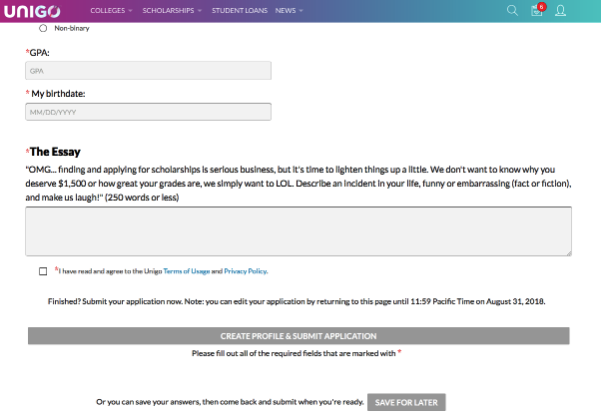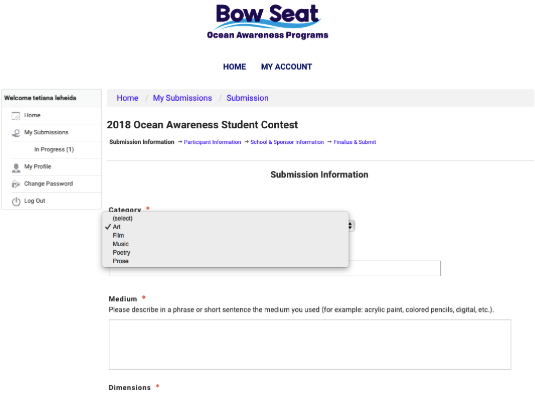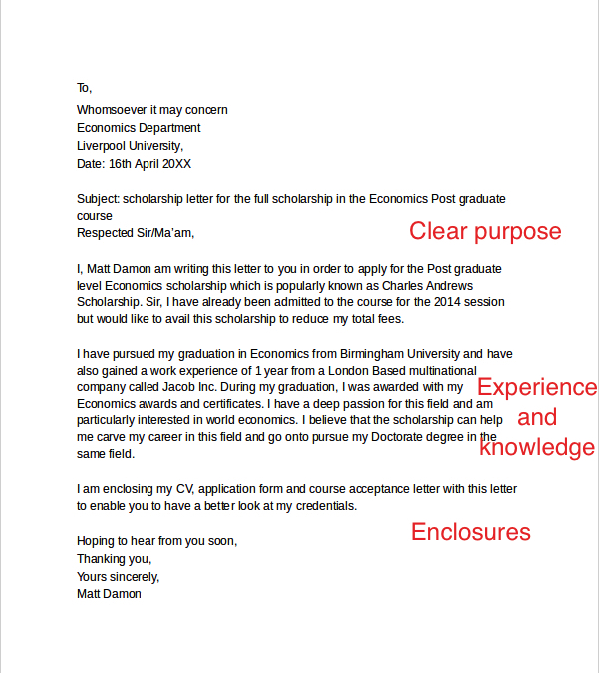How to Build the Perfect Scholarship Application Experience for Students
Writing a 2,000-word essay to win a scholarship doesn’t sound very exciting, but with reliable awards management software and a couple of creative ideas, you can ensure an exceptional scholarship application experience for students. We’ve developed a step-by-step guide to building a scholarship application that people will love.
Scholarship application process
To understand how to spice it up, you should first analyse the key frustrations of students applying for scholarships online. Here are the key stages of a standard scholarship application process:
Checking eligibility

Before applying, students should ensure that they meet all the entry requirements. Eligibility sections can be presented in various formats, from a list of criteria to an interactive survey.
Key mistakes: The eligibility section is hard to find on a scholarship website or the criteria are unclear, leading students to apply for scholarships they are not eligible for.
Solution: Use a single platform for scholarship contest submissions, and organise the process in a way that won’t allow people to apply until they have proven they meet the eligibility requirements. In other words, everyone who enters a scholarship portal should fill out a custom eligibility survey or be guided through each criteria before proceeding to the application form.
Submitting an entry
Whether it’s a web form or a portal for document upload, facilitating an intuitive user experience on your submission platform is crucial. A robust contest management tool will help you ensure that every eligible student can create a scholarship application without getting discouraged.
Key mistakes: Students submit incomplete applications or skip deadlines; no editing is allowed on a submission platform, and students don’t read over their work thoroughly before submitting; students don’t understand how to navigate on an application portal.
Solution:
- Use software that allows for easy withdrawal or editing of entries upon request by applicants.
- Set up deadline notifications.
- Have a support section on the scholarship website.
Getting results
Waiting is the hardest part. Utilise automated judging tools to accelerate the process of evaluation and scoring, on both local and international levels. Notify students about scholarship results, and provide them with scores and judges’ comments.
Key mistakes: The evaluation process is delayed due to time zone differences or the absence of a centralised communication platform; there is an inability to avoid bias; there is a failure to notify students about the outcomes.
Solution:
- Develop a judging mechanism that ensures timely entry evaluation anywhere, anytime, and on any device.
- Use judge abstention tools to prevent a conflict.
- Schedule notification campaigns in advance.
Scholarship organisation checklist
With an applicant’s journey in mind, you can start developing your custom scholarship organisation checklist. Here are the major processes you should focus on:
- Give clear instructions. In addition to the basic eligibility criteria and contest entry guidelines, include some valuable information about how winners will be selected. By stating whether a scholarship will be awarded based on professional skills, merit, or creative content, you will help applicants focus on what’s really important.
- Include an FAQ page. Reduce the workload for your support department. Try to think of the questions that your scholarship entrants might have about judging criteria, submission mechanisms, or scoring, and develop a comprehensive FAQ page that addresses each of these questions in a logical order.
- Provide timely updates. Whenever any changes or updates appear, make sure your scholarship entrants are the first to find out about it. Use a single communication channel to interact with entrants, and encourage students to set up automated mobile/email notifications to stay on track with the application process.
- Create and test an application form. Conducting a thorough testing of your application form before going live is a crucial step. Once you’ve created a form, go through the whole process of logging in, answering questions, uploading supporting documents, etc. It’s a good strategy to encourage your team members, colleagues, or friends to go through the same process and then to collect their feedback. You can base any final adjustments on this information.
- Disbursement. The last step is disbursing the funds based on the agreement with an educational establishment and the institutions providing funds. Ensure that a scholarship winner has the right enrolment status to avoid situations in which financial aid can be reduced because the student is not full time.
3 scholarship application templates
Standout scholarship application forms have three things in common:
- They are short and specific.
- They reflect an organisation’s branding and contest themes/values.
- They challenge critical thinking.
Check out the top three scholarship application templates; each is perfectly aligned with a unique scholarship idea:
Merit-based scholarship from Starfleet:

Creative UNIGO Scholarship “Make Me Laugh:”

Ocean Awareness Scholarship (custom submission forms for multiple categories):

Scholarship application letter example
To prove he or she is the one who ought to be awarded a scholarship, a student should be able to write a convincing scholarship application letter. After reviewing a number of successful letters, we came to the conclusion that the winning samples share the following features: 1) clear purpose for writing the letter; 2) a focus on knowledge, experience, and skills; and 3) a reference to the enclosed items.
Check out this example of a scholarship application letter that is picture perfect:

Conclusion
To facilitate the perfect scholarship application experience, you need a consolidated platform for entry submissions, scoring, and reporting. With good awards management software, you can take scholarships of any size to an international level.
